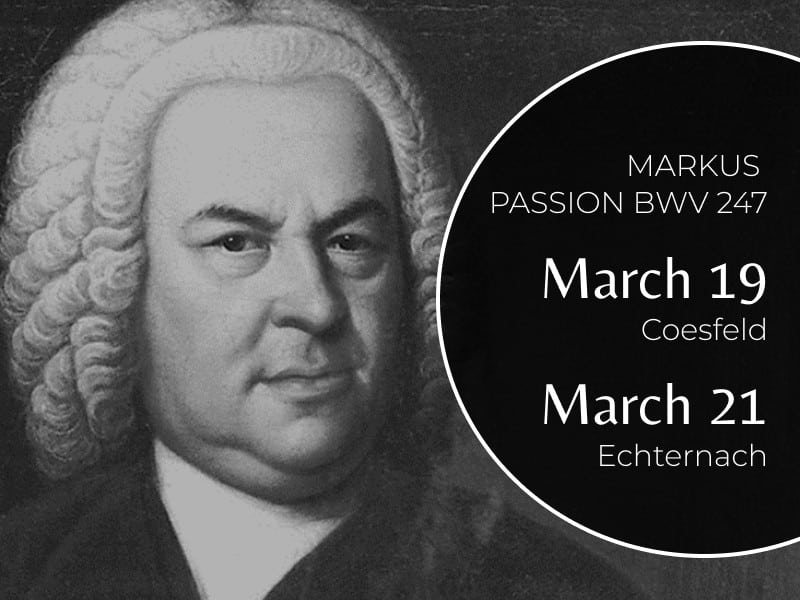New recording released with Alon Sariel
Vienna Mandolin Stories is Alon Sariel’s first full concerto album, inviting listeners on a journey through

We are in the midst of the Passion season, which of course also has an effect on the current activities of the Kölner Akademie. In the coming week, we will give two concerts in Coesfeld and Echternach. The program will include a Passion by Johann Sebastian Bach. And – in keeping with the special profile of the Kölner Akademie – Michael Alexander Willens has chosen neither the St. John Passion nor the St. Matthew Passion from the composer’s pen, but a lost composition.
Johann Sebastian Bach’s “St. Mark Passion” was probably composed around 1731 on the basis of the Gospel according to Mark. The texts by Picander have been preserved in their entirety in a collection of poems. The music is lost. However, due to the completely preserved libretto, attempts to reconstruct the music could be made again and again in the past. This was made more favorable in part by the fact that Bach used the parody method here. This means that he used movements from previously composed works (e.g. cantatas, odes, motets) again here and merely added a different text to them. Thus parallels were found with the cantata “Widerstehe doch der Sünde” BWV 54 and especially with the Trauerode BWV 198. Likewise, two chorales from the St. Mark Passion are said to have found their way into the Christmas Oratorio later.
In his new reconstruction, the musicologist Malcolm Bruno primarily used the Funeral Ode. This provides not only the material for the opening and closing choruses, but also a choral movement that conclusively closes the first part. Compared to the earlier, large number of chorales, Bruno drastically shortened them in his version, since their dramaturgical task is now omitted by the omission of sung recitatives. At dramatic points, the chorales have now been replaced more frequently by symphonies. Bruno did, however, add two final chorales, each at the end of the two parts, which are not based on Picander’s texts. The two chorales “Petrus, der nicht denkt zurück” (Peter, who does not think back) and “O Haupt voll Blut und Wunden” (O head full of blood and wounds) were deliberately included by him in his reconstruction in order to establish a connection to the St. John and St. Matthew Passions.
With regard to the arias, there are six arias in the St. Mark Passion for which music can be found via the parody procedure, but only for four is the music attested. In order to maintain a balance in the treatment of the solo voices here, Bruno added another bass aria. In the treatment of the recitatives, for which the music is missing in its entirety, the reconstructor follows the path already taken by many before him and places the recitative in the hands of an actor, thus leaving it to the spoken word.
After the Cologne Academy already recorded another reconstruction of Bach’s St. Mark Passion in 2010 with great success (one may find it in our shop), we are now looking forward to this new reconstruction and its realization in Coesfeld and Echternach. As a special guest at these concerts we may welcome Ulrich Noethen as speaker.
OTHER RECENT NEWS
Vienna Mandolin Stories is Alon Sariel’s first full concerto album, inviting listeners on a journey through
Which instrument do you play at the Kölner Akademie and when did you start playing?At
Which instrument do you play at the Kölner Akademie and when did you start playing?I